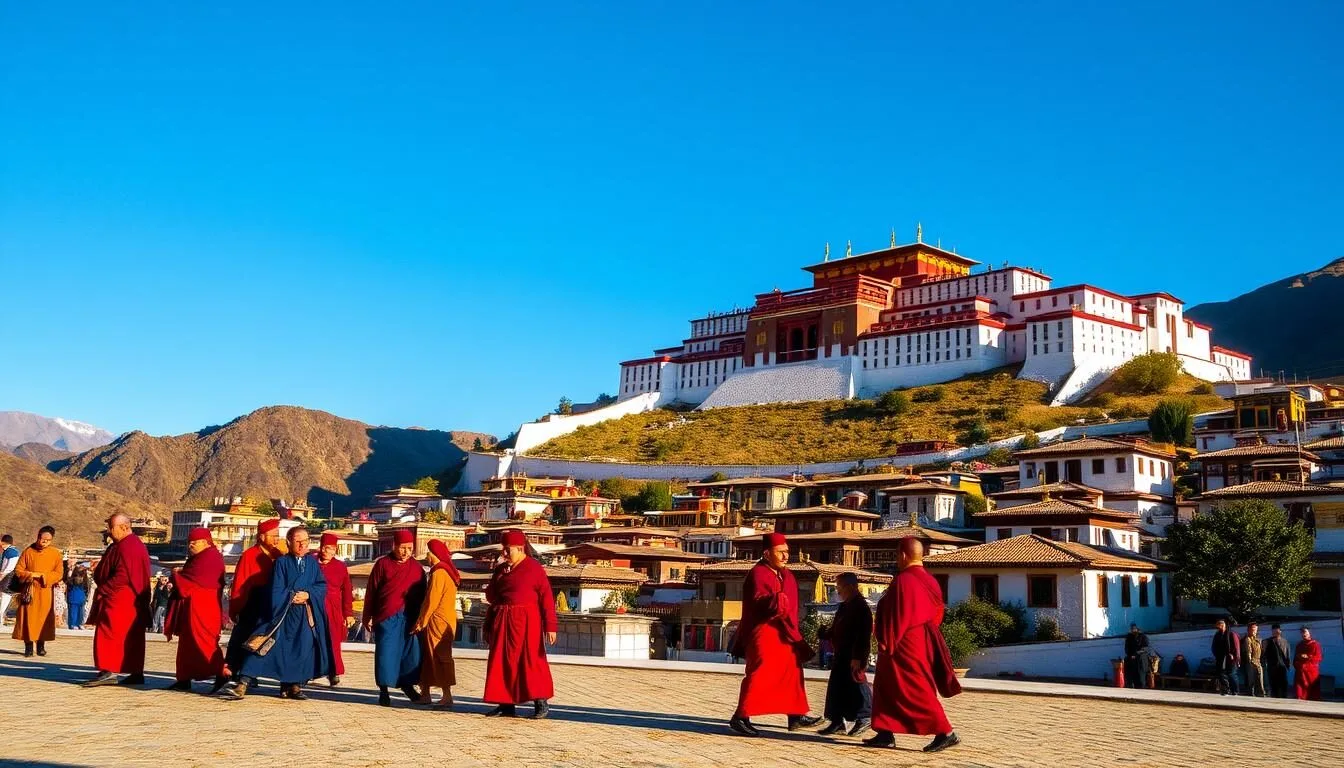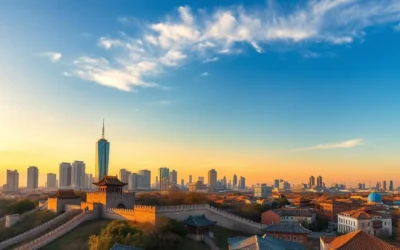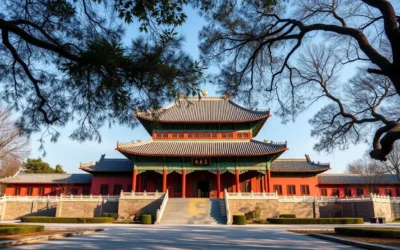✓ Accommodations✓ Flights✓ Rental Cars✓ Tours & Activities
At an altitude of 3,700 meters, Lhasa, the land of gods, is a city that embodies the spiritual heart of Tibet. With its rich Tibetan culture and historical significance, Lhasa attracts pilgrims, backpackers, and tourists alike. As the traditional seat of the Dalai Lama, this city has been the center of Tibetan Buddhism for centuries.
As you plan your trip to this high-altitude city, you’ll discover a perfect blend of ancient traditions and modern amenities. From exploring the city’s must-see attractions to understanding its historical importance, Lhasa is a bucket-list destination for travelers seeking unique cultural experiences.
Discovering the Sacred City of Lhasa
Lhasa, the sacred city nestled in the heart of Tibet, beckons travelers to explore its rich cultural heritage. As the spiritual center of Tibet, Lhasa is a city that seamlessly blends tradition with the natural beauty of the Tibetan Plateau.
The Spiritual and Cultural Significance of Lhasa
Lhasa is revered for its profound spiritual significance, being home to numerous sacred sites that attract pilgrims and travelers alike. The city’s cultural landscape is dominated by its monasteries, temples, and traditional architecture, which reflect the deep-rooted Buddhist traditions of the Tibetan people. The city’s spiritual heartbeat is palpable as you explore its ancient streets and visit its revered religious sites.
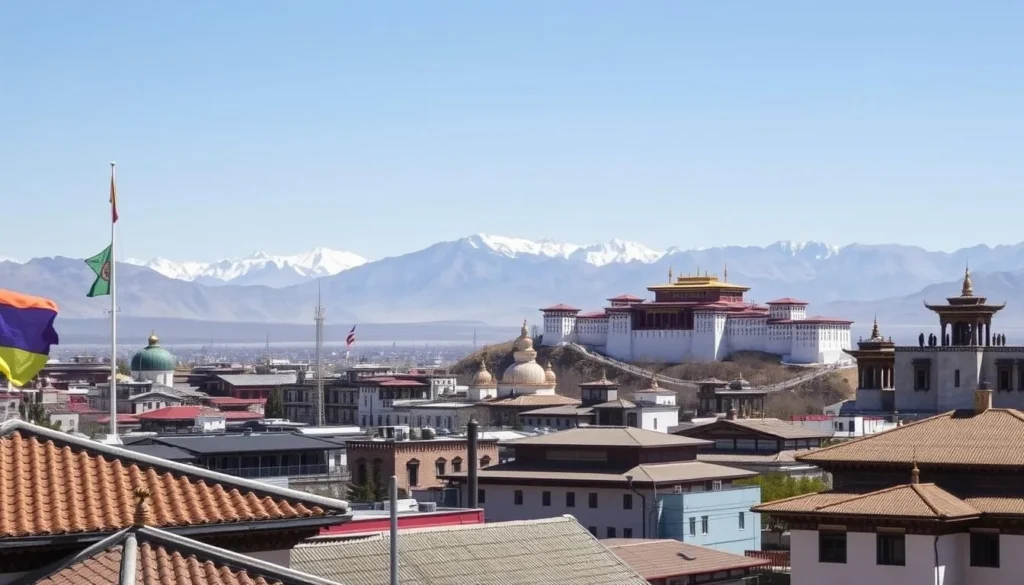
The significance of Lhasa extends beyond its religious importance, as it is also a custodian of Tibetan culture and history. Visitors can immerse themselves in the local culture by attending traditional festivals, sampling local cuisine, and engaging with the friendly locals.
Best Time to Visit and Altitude Considerations
When planning your trip to Lhasa, it’s crucial to consider the best time to visit and how to acclimatize to the high altitude. The ideal periods to visit are from April to June and September to November, when the weather is mild and stable. Lhasa’s high altitude of 3,700 meters can cause altitude sickness, so it’s recommended to spend at least 2-3 days in the city before venturing to higher altitude destinations.
To manage altitude-related symptoms, it’s advised to take it easy, especially when engaging in strenuous activities like climbing the Potala Palace. Understanding the challenges of Lhasa’s altitude and taking necessary precautions will ensure a comfortable and enjoyable travel experience.
Explore the Majestic Potala Palace
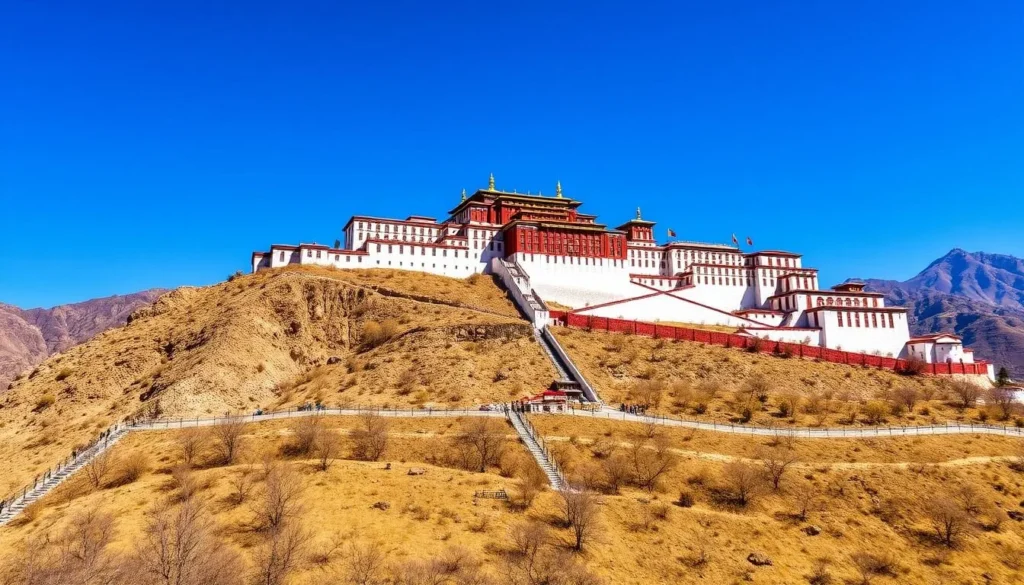
As you step into Lhasa, the majestic Potala Palace awaits, a testament to the city’s rich history and spiritual significance. This iconic landmark, once the winter residence of the Dalai Lama, is a must-visit destination for anyone traveling to Lhasa.
History and Significance of the Former Winter Palace
The Potala Palace, a UNESCO World Heritage Site, is steeped in history and spirituality. Built in the 7th century, it served as the Dalai Lama’s winter palace until 1959. The palace complex is a labyrinth of over 1,000 rooms, including chapels, tombs, and murals, showcasing the rich cultural heritage of Tibet.
The palace’s architecture is a blend of Tibetan and Chinese styles, reflecting its historical significance as a center of Tibetan Buddhism. The White Palace, in particular, is notable for its intricate murals and ornate decorations.
What to See Inside the Potala Palace
As you explore the Potala Palace, you’ll discover a treasure trove of artifacts, including sacred relics, statues, and thangkas. The palace is home to the Flying Goddess Thangka, a 300-year-old embroidered silk tapestry considered one of the most precious artifacts in Tibetan Buddhism.
Visitors can also explore the Dalai Lama’s private chambers, the sacred halls, and the tombs of previous Dalai Lamas. Be sure to take in the stunning views of Lhasa from the palace’s vantage points.
Tips for Visiting and Photography Opportunities
To make the most of your visit, wear comfortable shoes, as there are over 350 steps to climb, and no elevators are available. It’s also recommended to pace yourself to avoid altitude sickness. Be aware that photography is not allowed inside the palace halls, but you can capture stunning images of the exterior from vantage points like Nanshan Park and Chakpori Hill.
To avoid disappointment, secure your entry ticket in advance, as the number of visitors is limited to 2,300 per day. Plan your visit during the early morning or late afternoon for optimal lighting and fewer crowds.
Visit the Sacred Jokhang Temple
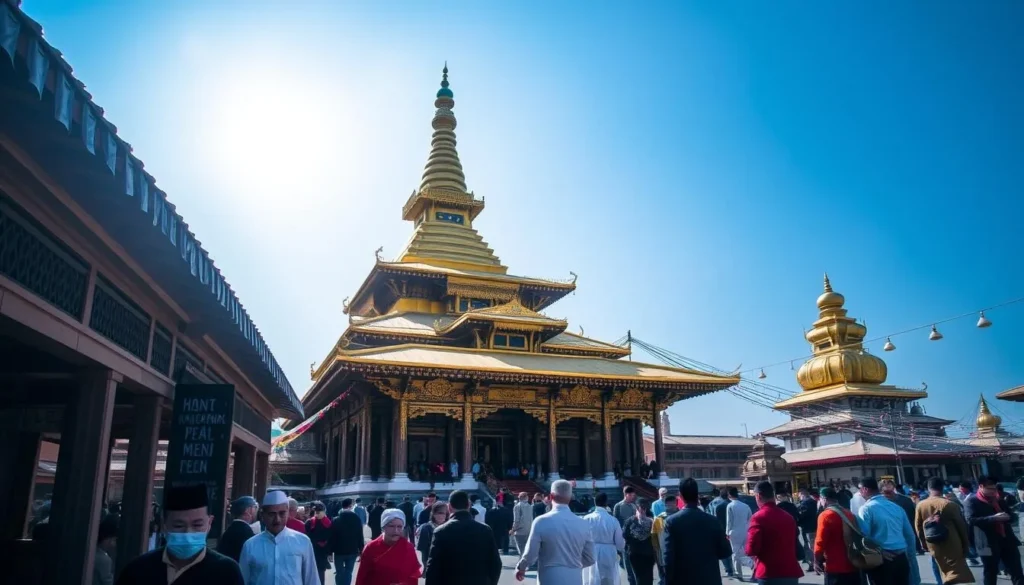
For pilgrims and tourists alike, the Jokhang Temple in Lhasa is an unforgettable experience that touches the heart of Tibetan culture. As you approach the temple, you’re immediately immersed in an atmosphere of devotion and spirituality.
The Spiritual Heart of Tibet
The Jokhang Temple is considered the spiritual heart of Tibet, a place where the essence of Tibetan Buddhism is palpable. It’s a site of immense historical and religious significance, attracting pilgrims from all over the Tibetan plateau. As you explore the temple, you’ll notice the deep reverence of the locals and tourists alike, all united in their respect for this sacred site.
The Golden Roof and Sacred Buddha Statues
The Jokhang Temple is renowned for its golden roof, which glistens in the sunlight, symbolizing the wealth and spiritual richness of Tibet. Inside, you’ll find sacred Buddha statues that are the focal point of worship and veneration. These statues are not only revered for their religious significance but also for their historical and artistic value.
Best Times to Visit and Local Customs
Visiting the Jokhang Temple requires an understanding of local customs and timings. The temple is open to pilgrims in the morning, while tourists can visit from 11:00 to 18:30. Here are some key points to consider:
- Learn about the temple’s visiting hours and plan your visit accordingly.
- Understand the proper etiquette, including dress code, behavior, and photography restrictions.
- Witness the most moving displays of devotion, such as early morning full-body prostrations by pilgrims.
- Follow the clockwise kora (circumambulation) as per Buddhist tradition.
- Understand the significance of offerings like butter, incense, and white scarves (khatas) made by locals and pilgrims.
- Experience the unique atmosphere during important Buddhist festivals.
Experience Barkhor Street and Kora with Locals
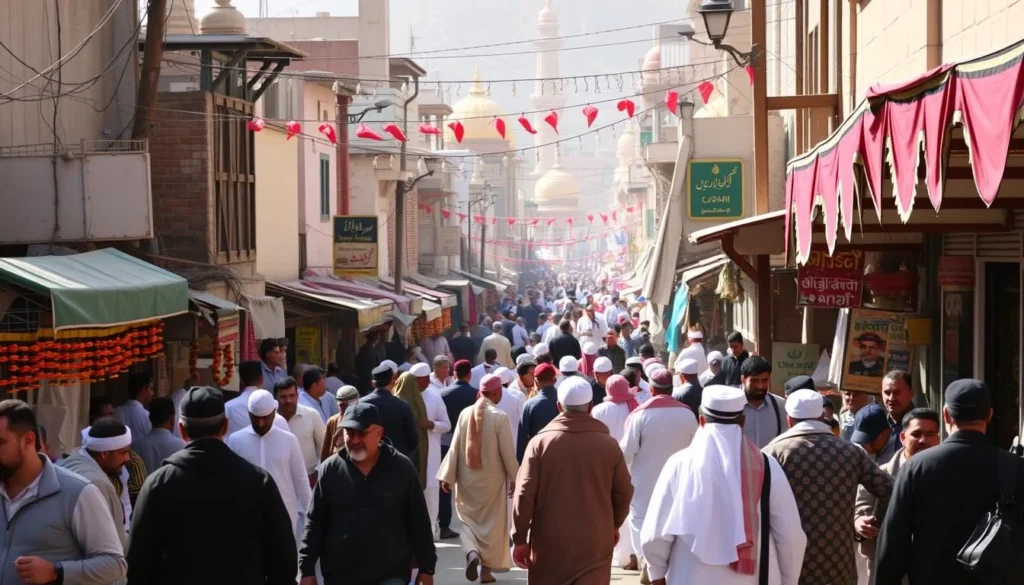
Barkhor Street, a sacred 1300-year-old thoroughfare, offers an immersive experience into the heart of Tibetan culture. As you explore this historic street, you’ll encounter a unique blend of traditional and modern elements.
Walking the Sacred Kora Circuit
Walking the Kora circuit around Barkhor Street allows you to experience the spiritual pulse of Lhasa. You’ll witness pilgrims performing their daily rituals, from prostrations to the circumambulation of sacred sites. This ancient practice is a testament to the enduring Tibetan culture and its deep-rooted traditions.
Shopping for Authentic Tibetan Souvenirs
Barkhor Street is renowned for its vibrant market stalls selling everything from traditional Tibetan clothing to handmade crafts. As you browse, you’ll find unique souvenirs that reflect the local culture, such as intricately designed prayer wheels and thangkas. Shopping here supports local artisans and provides a tangible connection to the community.
Cultural Immersion with Pilgrims
One of the most enriching experiences on Barkhor Street is interacting with the pilgrims who come from various regions of Tibet. By respectfully observing and engaging with these devotees, you’ll gain insights into their daily life and the significance of their religious practices. This cultural immersion enriches your understanding of Tibetan culture and creates lasting memories of your visit to Barkhor Street.
Witness Monk Debates at Sera Monastery
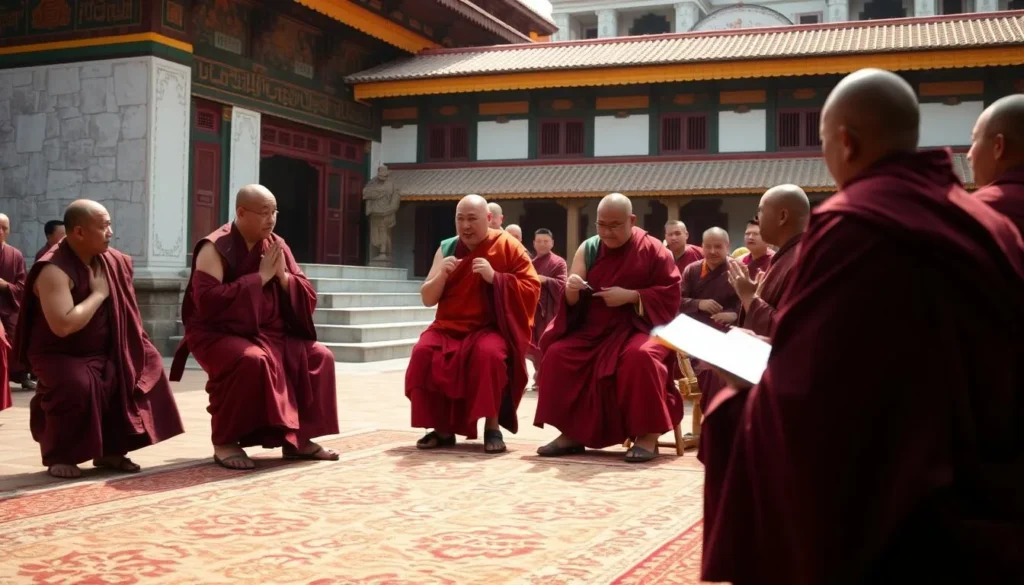
Sera Monastery offers a unique opportunity to witness the vibrant tradition of monk debates. From Monday to Saturday, the monastery hosts debates in its debate courtyard every afternoon.
Understanding the Tradition of Monk Debates
The monk debates at Sera Monastery are an integral part of Tibetan Buddhist education. Monks engage in rigorous debates to test their understanding of Buddhist scriptures and philosophy. This tradition helps to foster critical thinking and a deeper understanding of Buddhist teachings.
Best Viewing Times and Photography Tips
To witness the monk debates, plan your visit between 3:00 PM and 5:00 PM, Monday through Saturday. When observing the debates, remain quiet and avoid entering the debating area. Photography is allowed with permission, but be prepared for an additional fee. To capture compelling images, focus on the monks’ dynamic gestures and facial expressions.
To make the most of your visit, arrive early to secure a good viewing spot. Be respectful of the monks and other visitors, and avoid disrupting the debates. By doing so, you can enjoy this unique opportunity to experience Tibetan Buddhist culture firsthand.
Lhasa, China: Best Things to Do Beyond the City Center
Beyond Lhasa’s bustling city center, a world of adventure and tranquility awaits. The surrounding landscapes are dotted with ancient monasteries, offering a glimpse into Tibet’s rich cultural heritage and breathtaking natural beauty.
Drepung Monastery and Panoramic City Views
One of the most significant monasteries near Lhasa is the Drepung Monastery, perched on a hillside. This Gelugpa monastery is one of the largest in Tibet and offers not only a deep dive into Tibetan Buddhism but also panoramic views of the Lhasa Valley. As you explore the monastery’s vast complex, you’ll discover intricate murals, sacred statues, and the traditional living quarters of the monks.
To make the most of your visit, consider arriving early to avoid the crowds and take in the serene morning atmosphere. Don’t forget your camera to capture the stunning vistas of the surrounding landscape.
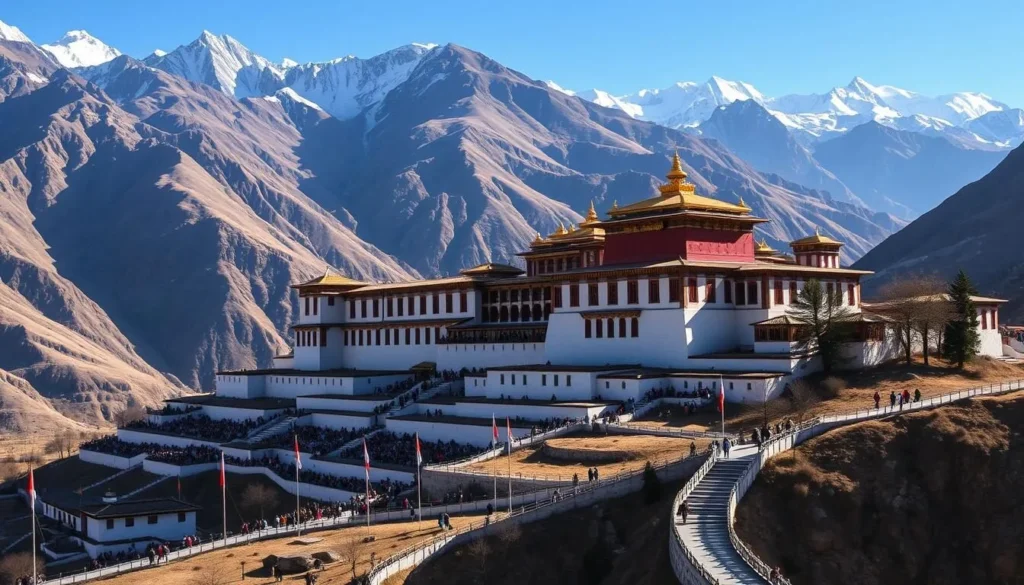
Ganden Monastery and the Scenic Kora Trek
Ganden Monastery, founded by Master Tsongkhapa, is another must-visit destination just outside Lhasa. Situated at an altitude of 4,300 meters on Wangbur Mountain, Ganden Monastery is renowned for its exquisite murals and sculptures, as well as its significant role in the Gelugpa school of Tibetan Buddhism.
The Ganden Kora, a 3-hour trek that circles the monastery, offers breathtaking views of the surrounding mountains and valleys. This adventure tour is perfect for nature enthusiasts and those looking to escape the city’s hustle and bustle. As you trek, you’ll be immersed in the serene beauty of the Tibetan landscape, making for a truly unforgettable experience.
When planning your tour to Ganden Monastery, allow enough days to explore the monastery and complete the kora trek without feeling rushed. This will enable you to fully appreciate the historical significance and natural beauty of this remarkable site.
Immerse Yourself in Authentic Tibetan Culture
To truly experience Lhasa, you must dive into the authentic Tibetan culture that permeates every aspect of life in this sacred city. Tibetan culture is rich and vibrant, offering numerous ways to engage with its traditions and people.
Enjoy Traditional Butter Tea at a Local Teahouse
One of the most iconic Tibetan experiences is sipping on traditional butter tea at a local teahouse. This salty, creamy beverage is a staple in Tibetan daily life, serving as a symbol of hospitality and community. As you savor the unique flavor, you’ll be participating in a centuries-old tradition that brings people together.

Experience Tibetan Nightlife and Entertainment
Lhasa’s nightlife is a fascinating blend of traditional and modern entertainment. From cultural performances to lively gatherings, there’s always something happening. You can enjoy traditional Tibetan music and dance, or simply soak in the vibrant atmosphere of the city’s evening gatherings, experiencing the local culture firsthand.
Try on Traditional Tibetan Clothing
The most direct way to embrace Tibetan culture is by dressing in their traditional clothes. The men’s version of the Chupa is usually looser, and when the belt is fastened, the upper part will have a rolled-up section like a pocket to hold things. Generally, Tibetan men wear a white or solid-colored shirt under the Chupa, along with pants and leather boots. The women’s version of the Chupa is cut more snugly and is available with or without sleeves. Women’s clothes are more brightly colored, and married Tibetan women often wear traditional handmade aprons.
| Traditional Clothing | Description | Significance |
|---|---|---|
| Chupa (Men’s) | Looser fit, rolled-up section for storage | Practical for nomadic life, indicates social status |
| Chupa (Women’s) | Snug fit, available with or without sleeves | Bright colors, indicates marital status and regional identity |
| Aprons | Handmade, colorful | Signifies marital status among Tibetan women |
By trying on traditional Tibetan clothing, you not only get a memorable photo opportunity but also gain a deeper appreciation for the cultural significance of these garments. Visiting shops or cultural centers in Lhasa where you can rent or purchase authentic pieces can be a meaningful part of your tour.
Unique Experiences in and Around Lhasa
If you’re looking for experiences that go beyond the ordinary, Lhasa is a city that will captivate your senses and leave you with unforgettable memories. From cultural events to natural wonders, Lhasa offers a diverse range of activities that cater to different interests.
Participate in Linka at Norbulingka Palace
One of the unique experiences you can have in Lhasa is participating in the traditional Linka festival at Norbulingka Palace. This ancient summer palace of the Dalai Lamas is a serene escape from the city’s bustle, and during the Linka festival, it comes alive with vibrant cultural performances and traditional Tibetan activities.
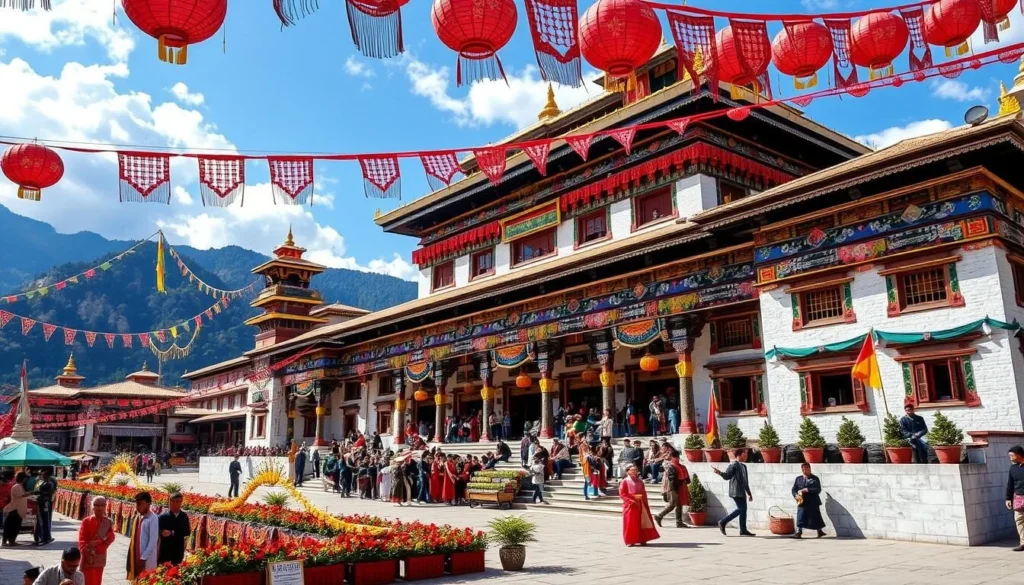
Visit the Tibet Museum to Discover Local Heritage
The Tibet Museum is a treasure trove of Tibetan history and culture, offering insights into the region’s rich heritage. With a vast collection of artifacts, including thangkas, masks, and ritual objects, you can explore the depths of Tibetan Buddhism and its influence on the local way of life.
Birdwatching in Lhasa During Winter
During the winter months, Lhasa transforms into a haven for various rare birds migrating from the harsh northern regions of the Tibetan plateau. The Lhasa River basin, with its vast waters and wetlands, attracts species like the black-necked crane and bar-headed geese, making it a top destination for birdwatching enthusiasts. You can explore prime birdwatching locations such as the Lalu Wetlands National Nature Preserve and Zongjiao Lukang Park.
Some of the top spots for birdwatching include Linzhou County and the Lhasa River, where you can observe these magnificent creatures in their natural habitat. The relatively mild winter climate of the Lhasa valley makes it an ideal location for these birds to overwinter, creating a unique “bird paradise.”
Whether you’re interested in cultural experiences, historical landmarks, or natural attractions, Lhasa has something to offer. With its rich heritage and diverse landscapes, this city is a must-visit destination for any traveler.
Conclusion: Making the Most of Your Lhasa Adventure
As the gateway to Tibet, Lhasa is a city that not only showcases the region’s rich history but also offers a glimpse into its resilient cultural heritage. With its majestic Potala Palace and sacred Jokhang Temple, Lhasa is a destination that promises an unforgettable travel experience.
To truly immerse yourself in the city’s spiritual and cultural significance, it’s recommended to plan your Lhasa itinerary to include at least 2-3 days in the city. This allows you to properly acclimatize to the high altitude of 3,700 meters before venturing to higher locations like Everest Base Camp at 5,200 meters.
Consider extending your trip beyond Lhasa to experience other remarkable destinations in Tibet. Understanding the importance of proper planning, including securing necessary permits well in advance through registered tour operators, is crucial for a smooth adventure tour.
Various tour options are available, ranging from cultural tours focused on monasteries and temples to adventure tours that include trekking or visiting remote areas. Preparing for your journey with practical tips on packing, health considerations, and respectful cultural practices will enhance your experience.
Reflecting on your visit to Lhasa, you’ll not only have seen significant landmarks but also witnessed a living cultural heritage that has endured for thousands of years. Consider the best seasons for different activities, whether you’re interested in festivals, clear mountain views, or avoiding peak tourist days during summer months.
The above is subject to change.
Check back often to TRAVEL.COM for the latest travel tips and deals.
